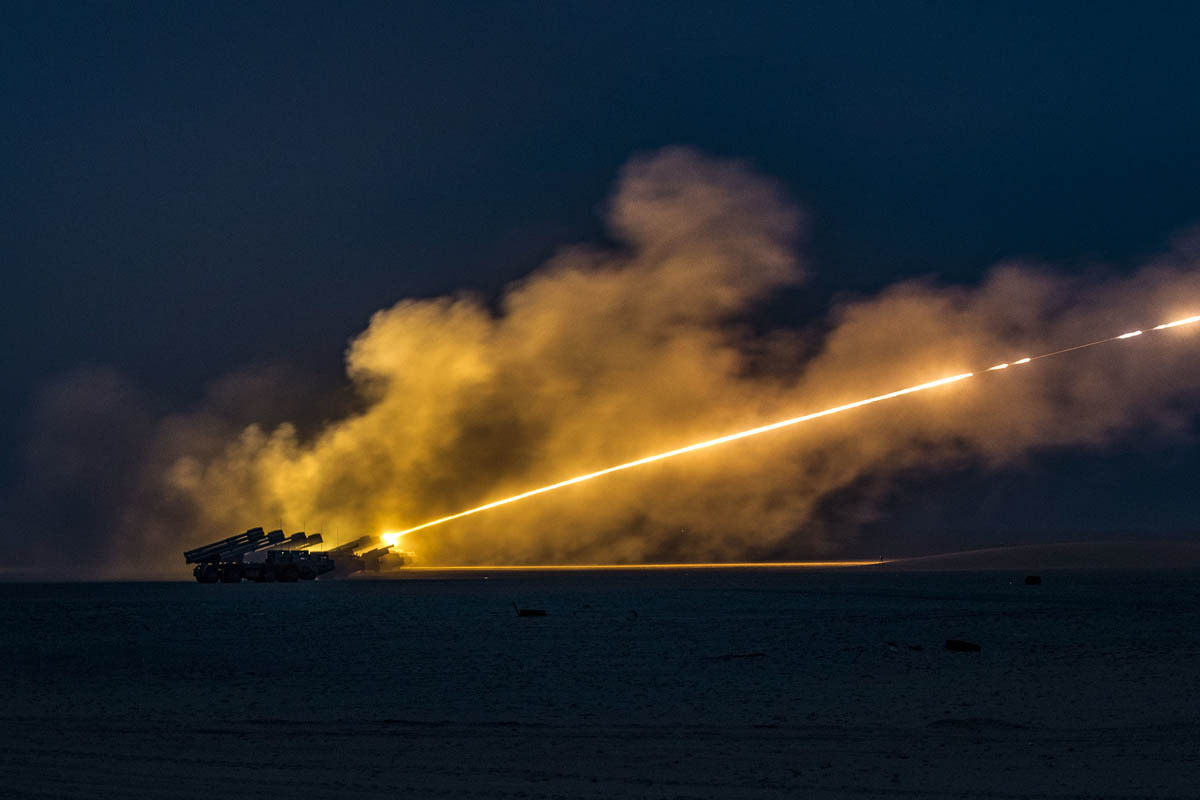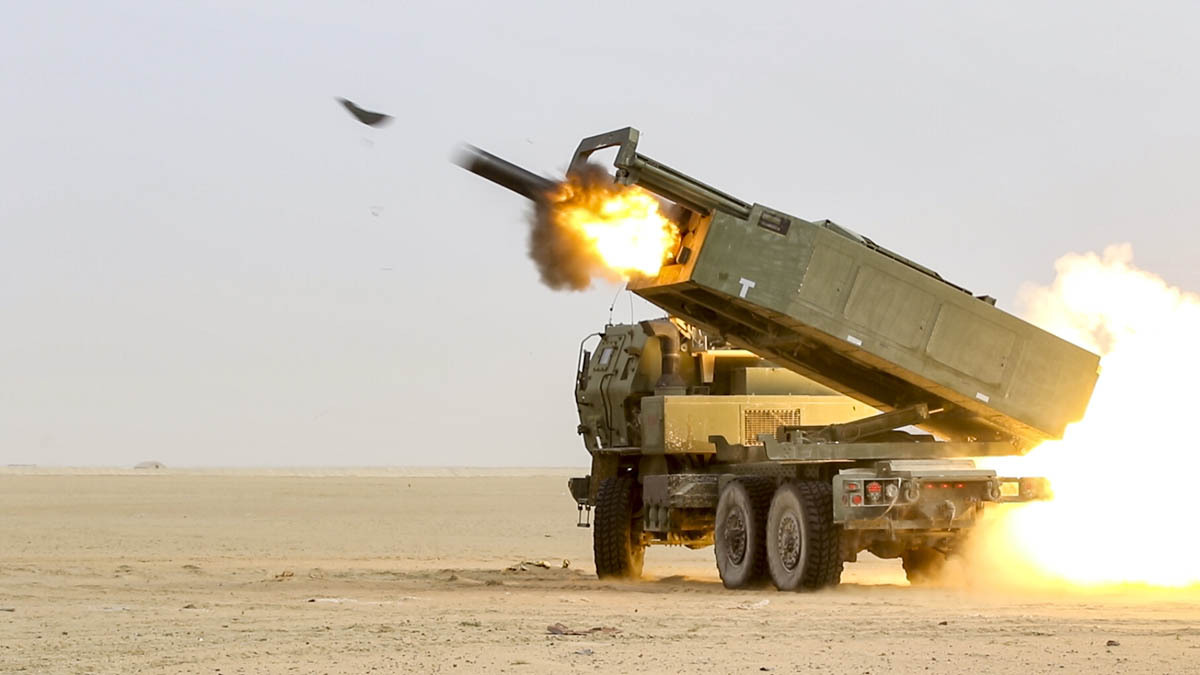
The ‘flash to bang time’ is one of those useful pieces of military shorthand that derives from the delay between the muzzle flash as a piece of artillery fires, and the bang as the shell arrives. From there, it has become an expression used to describe the delay between starting an activity and bringing it to fruition. It therefore seems an apt phrase with which to consider the delay between the many promises of the supply of military equipment to Ukraine, and their appearance and influence on the battlefield.

The war in Ukraine has slowly slipped out of the headlines, although it carries on as remorselessly as ever. Since the initial Russian advance on Kyiv (and subsequent rout), the main focus has been in the Donbas, where Russia has tried to consolidate and extend the territories captured during the previous war of 2014. Fighting there has seen the more traditional Russian approach of relentless artillery barrages, followed by an advance to capture the rubble.
Despite massive effort and heavy casualties, apparently on both sides, progress has been slow. The Ukrainians have defended resolutely, despite being outgunned in quantity of artillery, if not in quality. This has given rise to the media reports stressing the need to deliver more equipment to Ukraine NOW! Western governments, particularly Germany, have been criticised for the perceived slowness of their response, but it is now becoming evident that the reality behind the headlines has been slightly different – perhaps deliberately so.
The simple fact is that complex pieces of equipment cannot just be delivered and immediately put into the front line with any hope of success. The UK Ministry of Defence (MOD) has a process for managing the introduction of new equipment which is known as the Defence Lines of Development. It is actually a checklist of eight issues, which must all be brought together in order to convert a lump of metal into a useful military capability. It can be applied in many situations: I last looked at it when we installed a defibrillator for use in our village, in order to ensure that essential dependencies were covered, in addition to buying the piece of equipment.
- Concepts & Doctrine – what is the capability that you need and how does that fit into the way that you operate?
- Equipment – the piece of kit
- Information – what communications will you need? For example, for artillery, how will you get targeting information?
- Infrastructure – in the current war, a low priority, as equipment is likely to be in continuous use.
- Logistics – spares, maintenance and, in the case of artillery, ammunition.
- Organisation – how will the new capability integrate with existing structures?
- Personnel – have you got enough people with the right skills?
- Training – what additional training do you need to set up?
The equipment that has attracted most attention in recent weeks has been HIMARS, which, like all good military titles, is an acronym – High Mobility Artillery Rocket System. Like other western gun systems that have been supplied, its advantage is that it outranges Russian systems. Put simply, you can hit the enemy targets when they can’t reach you. This is particularly important when much of the activity is to try to destroy the other side’s artillery.

Conventional artillery has a range of up to 30km, or roughly the distance from Exeter to Newton Abbot. Identifying specific targets is a challenge and calculating the precise location of weapon and target is fundamental to shooting accurately. The Russian approach appears to be to make up in quantity what it lacks in accuracy, using huge volumes of ‘dumb’ ammunition. The result is to reduce the entire target area indiscriminately to rubble. The target may be the booking office at Newton Abbot station, but quite a lot of the town may become collateral damage. Western weapons with smart ammunition, which may include terminal guidance, are likely to be more precise, albeit more expensive per round.

HIMARS, as a rocket system, extends the range to about 70km (so from Exeter almost to Plymouth) which significantly enlarges the range of possible targets. This opens up a different concept of operations, as it is possible to reach much further behind the front line. Likely targets will be stores and ammunition dumps, headquarters and communications infrastructure. If the Ukrainians can force the Russians to move their supplies out of range, it makes it harder for them to support their front line; and if they can destroy bridges and railway junctions, they can compound the supply problems, progressively starving the front line of food, fuel and ammunition. This may sound obvious, but it does mean operating in a rather different way.
First of all, the target has to be found. The current favourite reconnaissance system seems to be the drone, or an unmanned aerial vehicle (UAV). This is not the simple equipment that you can buy off the internet, as it needs to be able to travel 70km and – one hopes – then return. It needs to have communications and control systems that cannot be jammed, intercepted or hi-jacked electronically. In fact, it becomes a capability in its own right, as there is a need to develop the skills not only to operate the vehicle, but also to interpret the images that are recorded, and to convert them into a list of targets.
The Ukrainians also need to manage the supply of ammunition. If you assume that there are 16 HIMARS currently in Ukraine and that each fires off the contents of two pods of six rockets each day, they will consume 5,800 missiles each month. US production is currently 9,000 missiles a year and each missile costs about $100,000. It is, therefore, a system to use with some discretion, although each missile fired is guided by GPS (Global Positioning System) and has a 90 per cent probability of hitting the GPS coordinates at which it is aimed. There is also a need to set up a supply chain that will ensure missiles are moved from the point of entry in Ukraine to supply the end-users, wherever they are.
Finally, training. Doubtless, the Ukrainians will have sent experienced gunners to learn how to use the new system, but it represents a step-change in complexity as well as capability. Imagine converting from using 1980s Supercalc to the latest version of Excel, and in a foreign language. You would need to understand all the functionality and to be fluent in it, as your life may depend on it. And you would need to learn to maintain a completely new and complex system, again in a foreign language.
It is some months since we saw the ‘flash’ of promises from governments around the world to deliver equipment to Ukraine. Notwithstanding the urgency of the situation, preparation of all the ‘lines of development’ will have taken time, and, equally critically, skilled personnel so that the new system can be used to best effect. Most recent reports seem to suggest that the Ukrainians have learned the lessons well and have used the new capability to degrade Russian ‘assets’ deep behind the front line – in this case, literally the ‘bang’.





